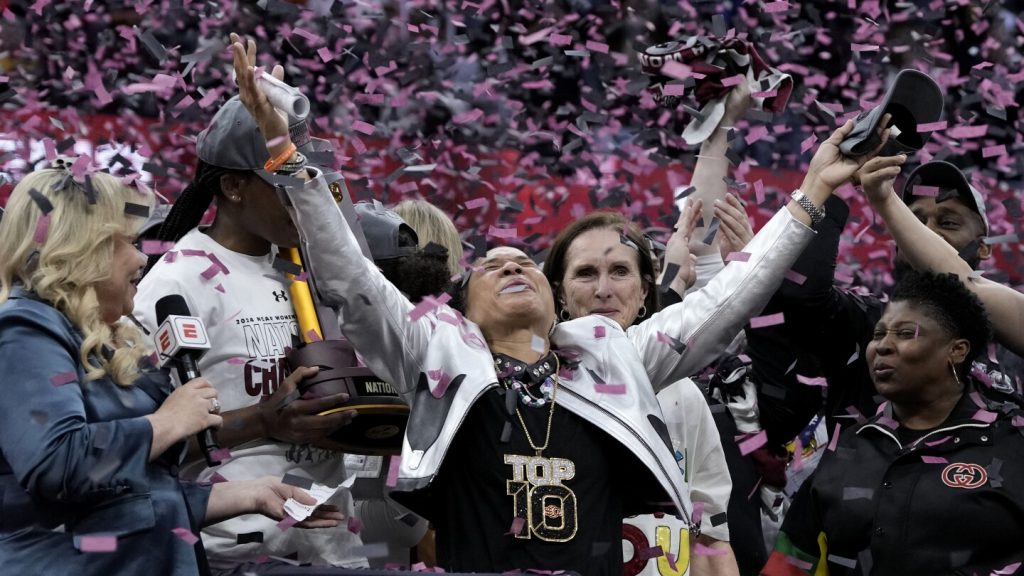The recent women’s NCAA basketball tournament showcased the growth and popularity of the sport, with increased attendance, record-breaking TV ratings, and a high level of buzz surrounding the Final Four. Iowa standout Caitlin Clark, the NCAA’s all-time leading scorer, believes that this surge in interest is sustainable and will continue to grow, both at the college and professional levels. The tournament saw notable attention not just for Clark but also for emerging stars like USC’s JuJu Watkins, leading to a more inclusive and visible platform for women’s basketball.
Despite the success of the tournament, there were still some notable issues, such as Notre Dame’s Hannah Hidalgo being forced to remove her nose ring during a game and discrepancies in the court dimensions at regional sites. These incidents highlighted the need for continued improvement and equality within the women’s tournament. One potential step towards more equitable treatment is introducing a financial model similar to the one used in the men’s tournament, providing financial benefits to teams and conferences based on their performance.
The increased visibility and marketability of women’s basketball players, enabled by the name, image, and likeness rules, have contributed to the growth of the game. Star players like Clark, UConn’s Paige Bueckers, and LSU’s Angel Reese are actively involved in endorsement deals and sponsorships, helping to drive interest in women’s college basketball. The combination of talented players, a growing fan base, and expanded marketing opportunities is shaping the future of the sport and building a sustainable platform for future generations.
Looking ahead, the focus remains on cultivating growth and expanding opportunities for women in basketball. With top players like Bueckers returning for another season and a new wave of talent entering the collegiate level, the momentum and excitement around women’s basketball continue to increase. Coaches like Dawn Staley emphasize the importance of supporting the overall growth of women’s sports, regardless of individual players or teams. The success of the recent tournament and the continued trajectory of the women’s game point towards a promising future with vast potential.
The cultural shift towards supporting women’s sports and the increased visibility of female athletes suggest a positive trend that goes beyond basketball. The recent success of the NCAA tournament, coupled with the broader movement towards gender equity in sports, reflects a significant moment in women’s athletics. As the sport continues to evolve and gain recognition, the possibilities for women’s basketball appear boundless, with the potential to become a more prominent part of the national sports landscape in the years to come. With a rich history and a promising future, women’s basketball is on the cusp of reaching new heights and becoming a mainstream powerhouse in the sporting world.


